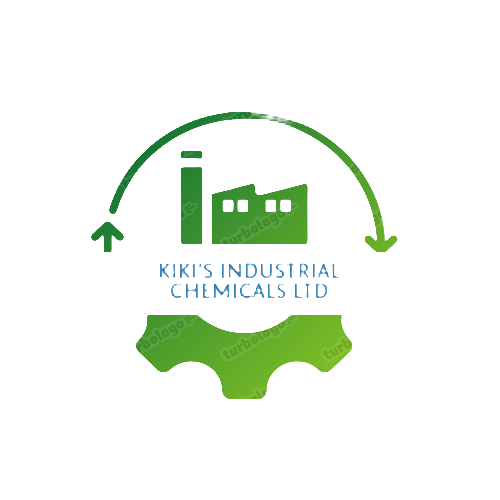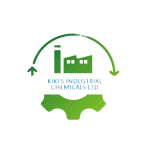MEG (Mono Ethyl GLYCOL) IN NAIROBI KENYA
Monoethylene glycol (MEG) is a chemical compound with the molecular formula C2H6O2. It is also commonly referred to as ethylene glycol monomethyl ether or ethylene glycol methyl ether. MEG is a type of glycol ether and is part of the larger family of ethylene glycol ethers.


Characteristics of Mono Ether of Ethylene Glycol (MEG)
Monoethylene glycol (MEG) possesses several characteristics that make it suitable for various industrial applications. Here are some of its key characteristics:
Physical State: MEG is a clear, colorless liquid at room temperature. It has a relatively low viscosity, making it easy to handle and mix with other substances.
Solubility: MEG is highly soluble in water, meaning it can form homogeneous mixtures with water in various proportions. This solubility is essential for its use in applications where it needs to be diluted or mixed with water-based solutions.
Boiling Point and Vapor Pressure: MEG has a relatively high boiling point (approximately 198°C or 388°F) compared to water. This characteristic is advantageous in applications where elevated temperatures are involved. Its vapor pressure is also relatively low at room temperature.
Hygroscopic Nature: MEG has hygroscopic properties, which means it has the ability to absorb and retain moisture from its surroundings. This property makes it useful for applications like gas dehydration and moisture control in certain environments.
Low Toxicity: While MEG is less toxic than its counterpart, ethylene glycol (EG), it’s still important to handle it with care. MEG has a lower level of toxicity and is less harmful if ingested compared to EG.
Chemical Reactivity: MEG can be involved in various chemical reactions due to the presence of its alcohol and ether functional groups. It can undergo reactions such as esterification and etherification, which are valuable in the synthesis of other compounds.
Industrial Versatility: MEG’s versatility arises from its role as a solvent, intermediate, and additive in various industrial processes. It’s used in the production of resins, plastics, textiles, and other materials.
Low Volatility: MEG exhibits lower volatility compared to some other solvents, making it suitable for applications where evaporation needs to be minimized.
Moderate Odor: MEG has a mild, ether-like odor, which is generally not overpowering. This characteristic can be advantageous in applications where strong odors are undesirable.
Environmental Considerations: MEG is biodegradable and doesn’t persist in the environment for extended periods, which is a positive characteristic in terms of its environmental impact.
Freezing Point Depression: While MEG is not commonly used as an automotive antifreeze like ethylene glycol, it still has some antifreeze properties due to its ability to lower the freezing point of water. This characteristic can be useful in certain industrial processes.
Applications of Mono Ether of Ethylene Glycol (MEG)
Monoethylene glycol (MEG) has a wide range of applications across various industries due to its solvent properties, chemical reactivity, and other characteristics. Some of the common applications of MEG include:
Paints, Coatings, and Inks: MEG is used as a solvent in the formulation of paints, coatings, and inks. It helps dissolve pigments, binders, and other components, improving the flow, consistency, and stability of the final products.
Chemical Intermediary: MEG serves as an intermediate in the production of other chemicals. It can be further reacted to produce compounds like diethylene glycol (DEG) and triethylene glycol (TEG), which find applications in the production of resins, plastics, and other industrial materials.
Textiles and Fibers: MEG is used in the production of polyester fibers and fabrics. It’s a key component in the polymerization process that creates the polyester material, giving it its desired properties like strength, durability, and wrinkle resistance.
Resins and Plastics: MEG is used in the manufacture of various types of resins and plastics, including polyester resins. These resins are used in applications such as molding, casting, and making composite materials.
Antifreeze and Deicing Solutions: While MEG is not as commonly used as ethylene glycol for automotive antifreeze, it still has some antifreeze properties. It can be used in antifreeze and deicing solutions for industrial equipment, pipelines, and other applications where freezing prevention is necessary.
Gas Dehydration: MEG’s hygroscopic properties make it suitable for gas dehydration processes. It’s used to remove moisture from natural gas and other gases, ensuring the quality and preventing corrosion in pipelines and equipment.
Personal Care Products: MEG is found in cosmetics, perfumes, and personal care products as a solvent or viscosity-modifying agent. Its use in these products helps maintain stability, texture, and fragrance.
Air Conditioning and Refrigeration Systems: MEG is used in air conditioning and refrigeration systems as a hygroscopic agent to help control moisture levels and prevent icing on cooling coils.
Adhesives and Sealants: MEG is used in the formulation of certain types of adhesives and sealants. It can improve the adhesive properties and flow characteristics of these products.
Industrial Cleaning Products: MEG’s solvent properties make it useful in industrial cleaning formulations. It helps dissolve grease, oils, and other contaminants.
Printing Industry: MEG is used in the printing industry as a component in fountain solutions and dampening solutions for lithographic printing processes.
Chemical Synthesis: MEG’s chemical reactivity makes it valuable in various chemical synthesis processes, including esterification and etherification reactions, which are used to produce a range of chemicals and compounds.
Hazards of Mono Ether of Ethylene Glycol (MEG)
Monoethylene glycol (MEG) is a chemical compound that, like many chemicals, has potential hazards associated with its handling and use. It’s important to be aware of these hazards and follow proper safety precautions to ensure safe working conditions. Here are some of the hazards associated with MEG:
Skin and Eye Irritation: MEG can cause irritation to the skin and eyes upon direct contact. Prolonged or repeated exposure to MEG can lead to dermatitis, redness, itching, and discomfort.
Inhalation Hazards: Inhaling the vapor or mist of MEG can lead to respiratory irritation, coughing, and difficulty breathing. High concentrations of vapor in poorly ventilated areas can cause headaches, dizziness, and nausea.
Ingestion Hazards: Ingesting MEG can lead to gastrointestinal discomfort, nausea, vomiting, and diarrhea. In severe cases, it can affect the central nervous system, leading to symptoms like headache, dizziness, and confusion.
Flammability: MEG is considered to be a combustible liquid. It has a relatively low flash point, meaning it can catch fire when exposed to an open flame or ignition source.
Environmental Impact: While MEG is biodegradable, large spills or releases into the environment can still have negative effects on aquatic life and ecosystems. It’s important to handle and dispose of MEG properly to prevent environmental contamination.
Compatibility: MEG may not be compatible with certain materials, such as certain plastics, elastomers, and rubbers. It’s important to consider the materials of containers and equipment when storing or handling MEG to prevent leaks or deterioration.
To minimize these hazards and ensure safe usage of MEG, follow these safety measures:
Personal Protective Equipment (PPE): Wear appropriate PPE, including gloves, safety goggles, and protective clothing, when handling MEG to prevent skin and eye contact.
Ventilation: Work in well-ventilated areas to prevent the accumulation of vapors. Use local exhaust ventilation to remove vapors and maintain good air quality.
Avoid Inhalation: Avoid inhaling vapors or mists by using proper respiratory protection in enclosed or poorly ventilated spaces.
Avoid Ingestion: Never eat, drink, or smoke in areas where MEG is being used. Wash hands thoroughly after handling MEG.
Spill Management: In case of spills, use appropriate spill containment and cleanup procedures to prevent further contamination.
Storage: Store MEG in properly labeled containers made of compatible materials, away from sources of heat, open flames, and incompatible chemicals.
Disposal: Dispose of MEG waste in accordance with local regulations and guidelines. Do not dispose of it down the drain or in the environment.
Emergency Response: Have emergency response measures in place, including eyewash stations, safety showers, and proper fire extinguishing equipment.
It’s crucial to consult safety data sheets (SDS) and other relevant safety resources provided by the manufacturer or regulatory agencies to understand the specific hazards and safe handling procedures for the particular formulation of MEG you’re using.

